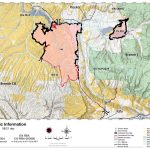Academic gains emerge across Colorado in 2025 school assessment results, but not all students are keeping pace
Historically disadvantaged student groups, primarily those whose first language is not English, fell behind their peers across grade levels in terms of academic achievement and growth

Taylor Cramer/Post Independent
Students across Colorado are showing promising academic gains on statewide assessments administered last spring, with many grade levels surpassing pre-pandemic performance. Yet long-standing achievement gaps for disadvantaged student groups continue to widen, according to 2025 assessment results released Thursday, Aug. 21, by the Colorado Department of Education.
More students in the assessed grades met or exceeded expectations on nearly every test compared to 2024, with several grades either meeting or surpassing their pre-pandemic scores after years of trying to catch up with lost growth.
“We’re encouraged by the progress many student groups are making,” Colorado Education Commissioner Susana Córdova said in a news release. “At the same time, we know there is work ahead to ensure more students are meeting Colorado’s academic expectations across every grade and subject.”
Overall, nearly all grades reported higher scores on the Colorado Measures of Academic Success tests — administered every year to students in grades three through eight — with the math and science portions seeing notable gains compared to last year. Fourth-grade English language arts and eighth grade English and math were the only groups to score below pre-pandemic levels, despite still seeing gains compared to 2024.
The only tests that saw a slight regression in performance were the reading and writing portion of the 10th grade PSAT and the math portion of the ninth grade PSAT.
When breaking English scores down by student groups, grade seven had the strongest gains with female students leading in performance. Grades five, six and eight also saw slight increases in the percentage of students meeting grade-level expectations.
All grades exceeded their pre-pandemic math scores except for grade eight — a notable feat for the state’s overall math performance, which was hit especially hard during the pandemic when several grade levels saw their scores drop in 2021. Male students outperformed female students in all grades.
The year-over-year math gains in grades four through eight comes on the heels of targeted efforts from districts to bring math scores back up, according to the Colorado Department of Education. In 2023 and 2024, the office of Colorado Gov. Jared Polis set aside federal COVID relief funding for a free online math platform for kindergarten to eight grade students. Polis stated he was pleased with the improvements in math.
“The fact that we’ve seen gains year over year over year at this point, I think, is a real indication that the focus, the legislation, the resources, are really paying off,” Córdova said during a media briefing of the results. “We are nowhere close to where we need to be when it comes to math, and math still lags where we are with literacy, and the only way we’ll catch up is to continue to have year over year gains, both in achievement and in growth.”
Rebuilding a base for PSAT/SAT scores

SAT scores saw notable gains compared to last year. The PSAT, a preliminary version of the SAT, is taken by students in grades nine and 10 while the SAT is taken by 11th graders.
High school students took the SAT and PSAT in its digital format for the second year in a row since its adoption in 2024. Up until 2023, the assessments were delivered via paper and pencil and contained slightly different content. This caused a shift in scores from 2023 to 2024 as students grew accustomed to the new format, which then pushed the education department to make 2024 the new baseline for scores.
Additionally, the board unanimously voted to temporarily lower the SAT math score required for high school graduation in 2024, derived from the College Board of Education’s nationwide transition to the Digital SAT and a subsequent statewide dip in math scores.
Since last year, SAT results for 11th-grade students have improved in both reading and writing. Ninth grade PSAT scores remained steady in reading and writing but declined in math, while 10th grade PSAT scores increased in math and decreased in reading and writing.
Growth gaps, however, still exist for several historically underserved student groups — primarily multilingual learners and students in the Individualized Education Program.
“Our special populations, particularly our students with (Individualized Education Programs), made less progress than their peers in 2024. That’s, of course, of great concern, because if our students are behind on achievement and making less growth, they’re going to get further behind. We need our students who are behind to make accelerated growth,” Córdova said.
On Thursday, Aug. 21, Summit School District announced it is celebrating strong academic performance following the release of its 2025 state assessment results.
Summit School District saw a significant increase in math achievement and growth in the 2025 state assessments, according to a news release from the district. The latest data from the Colorado Department of Education shows that Summit County students made gains in performance across the district’s schools and grade levels.
In the news release, the district stated that it also recognizes there is still room for improvement. In particular, high school English language arts growth on the PSAT/SAT showed a decline.
The district-wide English language arts PSAT/SAT growth score dropped to 44.0 in 2025. Persistent opportunity gaps were identified as Hispanic, multilingual learners, students with disabilities and those qualifying for free and reduced lunch.
District-wide, English language arts students meeting expectations increased from 39.7% to 42.6%. Students meeting expectations in math rose markedly, from 29.0% to 36.4%, showcasing a significant increase in recent years.
Additionally, growth scores showed strong upward trends in elementary and middle school math, with the district median growth score jumping from the 49th percentile in 2023-24 to the 60th percentile in 2024-25, meaning above the state average.
Summit Middle School, Summit Cove Elementary, Upper Blue Elementary and Silverthorne Elementary were among the schools that demonstrated significant math growth. Across all grades 3-8, students demonstrated improvement in at least one subject area. Gains in math were also observed among student groups that are historically underserved.
The Summit School District credits its academic gains to the district’s strategic plan, which helps guide instructional priorities and school improvement efforts across all classrooms and age levels. The plan focuses on four pillars, including instructional coherence, graduate profile development, belonging and culture and operational and financial stewardship.
The four pillars have helped drive both academic growth and deeper engagement in the classroom, according to the district.
Families can now access student assessment data. To view the scores, families will need their child’s state student identifier, available through the school’s parent portal or by contacting the school directly.
Participation: Better, but not quite there

Nearly all assessments saw an increase in participation in 2025, though none have reached 2019 levels. The department has been using 2019 as its “pre-pandemic indicator” since it was the year with the highest participation prior to the school closures.
Across the board, elementary school grades — grades three through five — saw the highest participation, ranging from 92% to 94%. Participation dropped slightly for middle schoolers, ranging from 80% for grade eight to 90% for grade six.
For the high school SAT and PSAT, participation ranges from 84-86% depending on grade level. The lowest participation comes from grade 11 science at just under 52%, down 9 percentage points from 2019, which Chief Assessment Officer Christina Wirth-Hawkins said is a representative sample of the overall state population.
Long-standing achievement gaps for disadvantaged groups remain ‘too wide’
Historically underserved student groups, primarily students with special needs in the Individualized Education Program and multilingual learners, made less progress in their assessments than their peers during the 2024-25 academic year, widening existing achievement gaps between the groups and the overall student population. While some of these groups have returned to pre-pandemic growth, they still fall below grade-level expectations.
“We also note that there are very large achievement gaps between student groups. They persist and continue to be too wide in some cases, even larger than they were prior to the COVID school closures,” Córdova said.
Students qualifying for free or reduced lunch saw improved eighth-grade scores and consistent performances in English and math compared to last year. Both scores still saw slightly widening gaps between their non-free-and-reduced-lunch peers — who made more progress in their assessments — of roughly 29-32.4 percentage points for English and 28-31 points for math.
Although students with special needs made gradual gains in achievement for English language arts, with between 9% to 14% meeting or exceeding expectations, they remain over 30 percentage points below their non-Individualized Education Program peers. Math performance was steady with 2024 scores, which are above pre-pandemic scores in all grades. While the percentage of students meeting or exceeding expectations remains relatively low, the data shows steady year-over-year progress.
Multilingual learners struggle to catch up
Overall achievement remains low for multilingual learners across grades and subjects — roughly 80% of whom speak Spanish as their first language — with fewer students meeting or exceeding expectations in English language arts compared to 2019. About 75% to 80% of students in this group are achieving lower performance levels with widening gaps between those who met or exceeded expectations, though performance was mostly stable compared to 2024.
“We know that this is an area that we need to lean into, because we’re not yet seeing the outcomes, either in growth or in performance, that are going to be necessary for these students to be successful in school,” Córdova said.
Córdova said several factors have impacted the persisting achievement gaps among multilingual learners, including slower rates of students returning to in-person learning after the pandemic, lower attendance rates and the influx of newcomer students early throughout the last few years.
“This has been a really challenging year for multilingual learners,” she said. “Anecdotally, we’ve certainly heard concerns about attendance with our multilingual learners. Our multilingual learners during COVID, in many cases, had some of the slowest return to in-person rates. And I think we saw a very large influx of new arrival students who, by definition, are furthest from having proficiency in English.”
The percentages of multilingual learners meeting or exceeding expectations in sixth through eighth-grade math are comparable to 2019 pre-pandemic levels. However, performance in English and elementary math remains below those already low benchmarks, according to the report. Ninth grade PSAT reading and writing, 10th grade PSAT math and SAT math showed gains.
“Growth at the elementary and middle school levels is more encouraging (ranging from 49th percentile to 46th percentile), although this is not as high as pre-pandemic levels,” the report states. “When considered together with the low achievement, multilingual learners statewide would benefit from continued support to accelerate growth to help meet grade-level expectations.”
Spanish language arts performance, an assessment offered to some multilingual learners in place of the English language arts assessment, still lagged behind English scores. In 2025, roughly 42% of students in grade four English met or exceeded expectations, consistent with 2024. By comparison, 13.1% of fourth graders who took the Spanish assessment met or exceeded expectations, a decrease of 2.8 percentage points from last year.
“In 2025, I would say that special populations have returned to about pre-pandemic levels on growth, which is very encouraging, but we still want to focus on closing the gaps on those different levels for them,” Lisa Medler, Executive Director of CDE’s Accountability and Continuous Improvement department, said during a Thursday media briefing on the results.
While these achievement gaps persist, most racial and ethnic groups saw increases in the percentage of students meeting or exceeding expectations on the Colorado Measures of Academic Success tests, particularly in seventh-grade English, fourth, sixth and eight-grade Math, and eighth-grade science compared to 2024. In particular, Black and Hispanic students saw gains across many CMAS and PSAT/SAT tests.
For the English language portion of the Colorado Measures of Academic Success, black students saw gains in grades three, seven and eight while Hispanic students saw gains in grade seven. These groups still fall between 25-32 points lower than their white and Asian peers.
Carbondale paraglider breaks continental distance record
Imagine descending from nearly 18,000 feet on a down draft at 1,000 feet per minute, or being shot away from earth at twice that speed.

Support Local Journalism

Support Local Journalism
Readers around Glenwood Springs and Garfield County make the Post Independent’s work possible. Your financial contribution supports our efforts to deliver quality, locally relevant journalism.
Now more than ever, your support is critical to help us keep our community informed about the evolving coronavirus pandemic and the impact it is having locally. Every contribution, however large or small, will make a difference.
Each donation will be used exclusively for the development and creation of increased news coverage.










